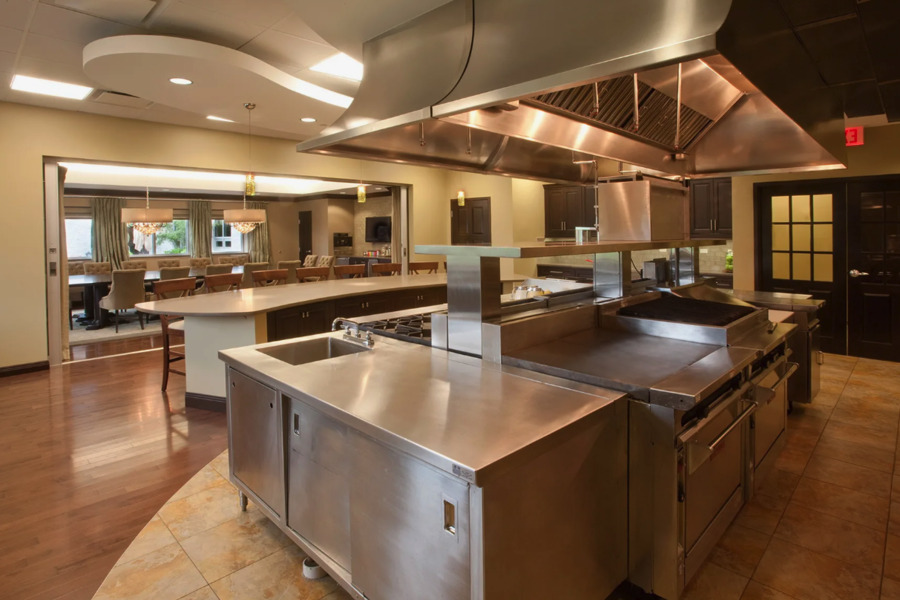Opening a new restaurant is an exciting yet daunting venture. One of the critical steps in ensuring its success is selecting the appropriate restaurant equipment. This guide is designed to aid new restaurant owners in making informed decisions about the essential equipment required to run a smooth and efficient kitchen.
Core Restaurant Equipment Categories
1. Cooking Equipment
- Ranges and Ovens: The choice between gas and electric ranges depends on what is available in your area and the specific needs of your cuisine. Gas ranges provide immediate heat control whereas electric ranges offer even heat distribution.
- Grills and Griddles: Essential for restaurants that feature grilled meats or breakfast items like pancakes and eggs. Consider the size and fuel type (gas or electric) based on your menu needs.
- Specialty Cooking Equipment: Depending on your menu, you may need specialty items like commercial steamers for seafood, deep fryers for fried foods, or wood-fired ovens for artisan pizzas.
2. Refrigeration Equipment
- Refrigerators and Freezers: Opt for a combination of reach-in or walk-in units depending on the size of your operation. Under-counter refrigerators are excellent for space efficiency and ease of access.
- Cooling Systems: Proper refrigeration is crucial for food safety and compliance with health regulations. Plan your cooling systems to accommodate peak storage needs, especially in climates with significant temperature variations.

3. Food Preparation Equipment
- Mixers and Food Processors: Choose based on the volume of food preparation your restaurant will handle. A heavy-duty processor can save time and labor during the prep stage.
- Cutting and Peeling Equipment: Invest in ergonomically designed tools that enhance safety and efficiency in food preparation.
- Worktables and Stations: Stainless steel surfaces are preferred for their durability and ease of cleaning. Ensure that the layout of these stations matches the flow of kitchen activities.
4. Beverage Equipment
- Coffee Machines: Essential for restaurants offering breakfast or cafe-style menus. Consider machines with multiple brew settings to offer a variety of coffee styles.
- Blenders and Juicers: Necessary for bars or restaurants focusing on fresh juices or cocktails.
5. Dishwashing Equipment
- Commercial Dishwashers: Choose between high-temperature and low-temperature models based on your volume and the types of dishes used. Ensure it meets local health department requirements.
- Sinks and Accessories: Plan for multiple sinks to handle various tasks like washing produce, handwashing, and pot washing, in compliance with health codes.
6. Holding and Warming Equipment
- Food Warmers: Include solutions like steam tables to keep food at safe temperatures without sacrificing quality.
- Holding Cabinets: Useful for large-volume kitchens or catered events, helping to manage food flow during peak times.
Additional Considerations
1. Ventilation Systems
- A well-designed ventilation system is vital for maintaining air quality and comfort in the kitchen. This includes investing in a good quality range hood and ensuring proper outdoor venting to handle smoke and odors.
2. Safety and Sanitation Equipment
- Safety equipment such as fire extinguishers and first aid kits are mandatory. Sanitation stations, including handwashing stations and sanitizing tools, must be strategically placed to maintain hygiene standards.
- For specific health code requirements, restaurant owners should consult the FDA Food Code provided by the U.S. Food and Drug Administration, which offers extensive guidance on health and safety in food service.
3. Storage and Shelving
- Efficient storage solutions are crucial for managing inventory and ensuring quick access to supplies. Use shelving units that are easy to clean and adjust, providing flexibility for different storage needs.
4. Seating and Serving Equipment
- The furniture should not only match the restaurant’s aesthetic but also offer comfort to ensure a pleasant dining experience for guests. Durable and easy-to-clean materials are preferred.
- Serving ware and tableware selections should align with the menu’s theme while ensuring practicality for daily use.

Budgeting and Procurement
Budget Planning
Careful financial planning is necessary to ensure you can afford quality equipment without overextending your budget. Consider leasing options for high-cost items like refrigeration units or ovens to mitigate upfront costs.
Procurement Strategies
Selecting the right vendors is as crucial as choosing the equipment itself. Look for suppliers with reliable after-sales service and favorable warranty terms. Negotiate prices where possible and consider buying in bulk for better deals.
Conclusion
To lay the groundwork for a prosperous culinary enterprise, investing sufficiently in the appropriate restaurant equipment is essential. This way, you benefit from ensuring that everything is conducted smoothly.

Cyclist, feminist, drummer, reclaimed wood collector and critical graphic designer. Making at the sweet spot between art and purpose to save the world from bad design. Nothing ventured, nothing gained.
